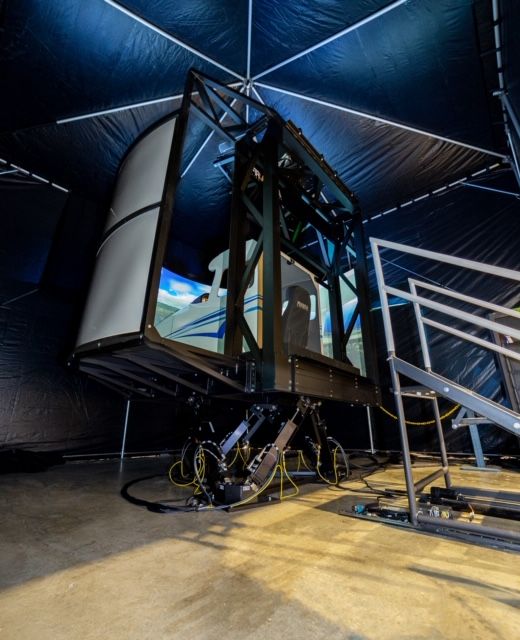Flight School First To Add High Fidelity Motion Simulator
This is a great step forward! While there is no substitute for “the real thing” today’s sims are pretty darn close! I wish these kinds of sims had existed way back in the stone age when I went to UPT / learned to fly the T-29 (CV-240) / learned to fly the C-141. By the time I retired and got to the ATR-42 then the 747, sims had progressed multi-exponentially and I loved them for learning and checking. If you needed to work on a specific item, multi-repeats were simple as can be. With today’s computers and systems, these things need to be everywhere! They should be especially helpful with instrument training and refresher work. These need to be at every GA airport with enough pilots in the area to support one! Imagine, fly in on a gorgeous morning, have breakfast, or whatever, get a briefing, fly an hour or two in real, dicey instrument conditions, get debriefed, get coffee, then fly home in that same beautiful weather!
For initial training, can’t beat it for teaching visual cues, and repeating maneuver parts that are stumping the student. Get them well up to speed at a far cheaper cost before they ever climb into an airframe. Today’s sims really work! Even back in 1994, my very first 747 landing was on a revenue leg, at ANC, visual to 14 with no VASI (NOTAMed out), and I felt very comfortable. And, today’s sims are much, much better that what we had back then!
David C.
For the student pilot who intends to fly for a living (airlines), this is great. It will get you used to dealing with a simulator right from the start. The problem I have is how does this work with the person who wants to fly as a weekend hobby? Where is the “fun” factor? Unless you are into computers or video games, I just don’t see how this will attract more persons to take up recreational flying.
Matt W.
This will be a valuable tool for student pilots. If you want to test your limits on, for instance, cross wind landings without risking an actual aircraft or having to wait for weather is invaluable. Regardless if the sim time counts for log-able hours, the training is the important thing.
Robert B.
Flight Trial: Pipistrel’s Sleek Panthera
Congratulations to Paul Bertorelli on another superb piece. Paul, your writing and presentation style never fail to blow me away. You cut right to the chase and your pacing, level of detail, and clarity of analytical thought make you mandatory reading. Your subtle use of dashes of humour is absolutely delightful and thoroughly engaging (some might say addictive!). All this while providing lucid discussions of very technical subject areas. Whoever is doing your graphics (I would bet it’s you) is similarly incisive and clear, with just the right amount of clarifying text to augment the voice track. Bravo Sir! Thank you for your superb contributions to my inbox.
Andy H.
Cirrus Chutes
Mr. Bertorelli,
I enjoy the reporting you do. It seems you are quite objective – a precious thing. I felt the same about your report on the Cirrus chutes efficacy.
Like a lot of things, the more you look into them the more questions come to mind. I fly a Cardinal RG. My concern about chutes is about their weight. My aircraft effectively becomes a 3-seater for my family’s more-than-a-day-trip travel if I were to put an addition 80lbs of chute system into it. So this makes me wonder, how would this weight penalty appear in safety statistics? You have made a good case for the overall safety of an aircraft designed from the ground up, with a specific mission profile, including a chute. That does not mean there wasn’t a trade-off in safety. I did not hear you comment upon density altitude related accidents. It seems reasonable that the 80lb penalty would affect an increase of accidents related to insufficient rate of climb. Of course, these appear in the overall stats, but should one say ‘I’m gonna put a chute in my 1975 whatchi-craft’, it does not mean that aircraft will benefit. The Cirrus has a rough time flying into one of my favorite airports because its design traded short field performance for cruise performance. So my question is really how effective retrofits would be to the existing GA fleet, especially as it applies to those aircraft with shorter field missions? If I take, say, an older mountain flying aircraft, throw out 80 lbs. of useful load, will the result be a disproportionate rise in crashes upon take off? Will such an aircraft render the question irrelevant because the aircraft with the extra 80lbs is no longer perceived as capable of its mission, and be followed by a corresponding lack of sales? Why do so few new designs include a chute?
The above is not a criticism of your article which I thought was quite good. Take it as an indicator that the article was good enough to cause me to ponder other ‘what-ifs’.
Dave I.



































